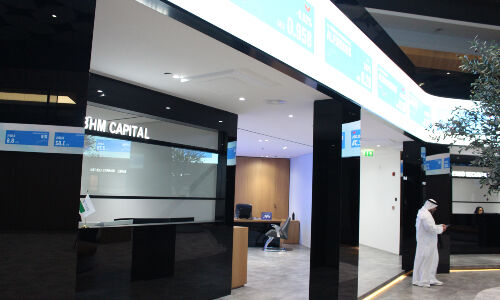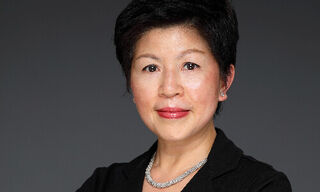Digitalization Fuels Profits at UAE Banks
Local lenders in the United Arab Emirates (UAE) earned more in the first three months of and according to Alvarez & Marsal, there is one financial factor outside of the Emirati banks' control that slightly weighs on their margins.
Written by Gérard Al-Fil, Dubai
According to the mid-June report UAE Banking Pulse by Alvarez & Marsal (A&M), the net profit of the UAE's 10 largest publicly listed banks rose 8.4 percent quarter-over-quarter to 22.2 billion dirhams ($6.05 billion).
Digitalisation Cuts Costs
«The strong results were driven by a significant 59.3 percent drop in impairments, as well as an 18 percent rise in net fee and commission income compared to the previous quarter,» said Asad Ahmed, Managing Director of Financial Services at A&M in Dubai.
Banks continued to benefit from digital transformation and strict cost control. For example, Dubai’s largest universal bank, Emirates NBD, entered into a partnership with credit card company Mastercard on March 1 to integrate Mastercard’s AI technology Brighterion into its payment platform. According to the bank’s press release, Brighterion accelerates and secures digital payments across the Middle East via Emirates NBD.
Operating expenses fell by 7.8 percent compared to the previous quarter, improving the cost-income ratio (C/I) by 234 basis points to 28.2 percent—the lowest level in a year. This cost discipline contributed significantly to profitability, even amid flat revenue.
Pressure from Interest Rates
A «robust growth in lending and deposits» is fuelling profit growth, Ahmed notes. However, net interest income declined by 2.1 percent. The UAE’s currency, the dirham, is pegged to the US dollar because oil – the country’s primary source of revenue– is traded in dollars. This means that interest rate decisions by the U.S. Federal Reserve are mirrored by the UAE central bank in Abu Dhabi. In December 2024, the Fed cut U.S. interest rates by 25 basis points, lowering the target range to between 4.25 percent and 4.5 percent. The UAE holds 7 percent of the world’s known oil reserves, and the dirham remains fixed at 3.67 per dollar.
Nevertheless, «Despite a 2.1 percent decline in net interest income, profitability improved across key indicators: Return on equity (RoE) rose to 18.6 percent, and return on assets (RoA) improved to 2.1 percent,» notes A&M expert Ahmed. He added, «Emirati banks also saw continued improvements in cost efficiency and asset quality, with falling cost-to-income ratios and improving risk metrics.»
Neobanks on the Rise
The ten largest financial institutions in the UAE—listed on the Dubai Financial Market (DFM) and the Abu Dhabi Securities Exchange (ADX)—based on total assets are:
- First Abu Dhabi Bank (FAB)
- Emirates NBD (ENBD)
- Abu Dhabi Commercial Bank (ADCB)
- Dubai Islamic Bank (DIB)
- Mashreq Bank (Mashreq)
- Abu Dhabi Islamic Bank (ADIB)
- Commercial Bank of Dubai (CBD)
- National Bank of Fujairah (NBF)
- National Bank of Ras Al-Khaimah (RAK)
- Sharjah Islamic Bank (SIB)
Despite rising profitability, there is no room for complacency among the top 10. As in many regions across the globe, more and more neobanks and digital wallet providers are challenging traditional banks in the Gulf Emirates. The most recent newcomer is the digital WIO Bank, a homegrown project of the Abu Dhabi sovereign wealth fund ADQ.
The Zand Bank, operating in Dubai since 2022, is backed by none other than Mohammed Alabbar, Chairman of property developer Emaar Properties and the father of the world’s tallest building, the 828-metre vertical Burj Khalifa.
Swiss online bank Swissquote has also established itself as a credible alternative to traditional banking in the Gulf region.



























